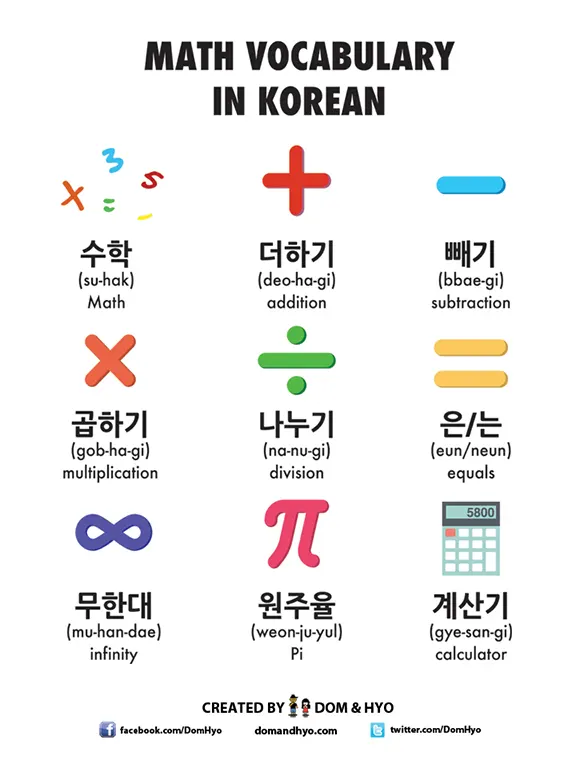
Hey whatsup guys! Today we’re talking about how to say math terms in Korean. You may have always been curious about how to say these even though you will most likely not use them often unless you go through some type of schooling in Korea.
Let’s start with the basic math calculations
addition = 더하기 (deo-ha-gi)
subtraction = 빼기 (bbae-gi)
multiplication = 곱하기 (gob-ha-gi)
division = 나누기 (na-nu-gi)
equals = 은/는 (eun/neun)
So how would you say these in a math equation? For starters, always use Sino Korean numbers when saying math equations.
Let’s start with addition:
2+2 = 4
In Korean: 이 더하기 이는 사 (i deo-ha-gi i-neun sa)
Let’s break it down
이(2) 더하기(plus) 이(2) 는(equals) 사(4)
Also note that for equals, you would use 는 if the last syllable is a vowel and 은 if the last syllable is a consonant.
How about subtraction?
5-3 = 2
오 빼기 삼은 이 (o bbae-gi sam-eun i)
오(5) 빼기(minus) 삼(3) 은(equals) 이(2)
Now multiplication:
4x 2 = 8
사 곱하기 이는 팔 (sa gob-ha-gi i-neun pal)
사(4) 곱하기(times) 이(2) 는(equals) 팔(8)
And finally, division:
9÷3 = 3
구 나누기 삼은 삼 (gu na-nu-gi sam-eun sam)
구(9) 나누기(divided by) 삼(3) 은(equals) 삼(3)
And that’s it! Just replace the numbers with whatever numbers you want to add, subtract, multiplay, or divide. Basically like a formula.
If you need a refresher on numbers, check out our post here.
Other vocabulary in this graphic:
수학 (su-hak) = math
무한대 (mu-han-dae) = infinity
원주율 (weon-ju-yul) = Pi (3.14)
계산기 (gye-san-gi) = calculator
